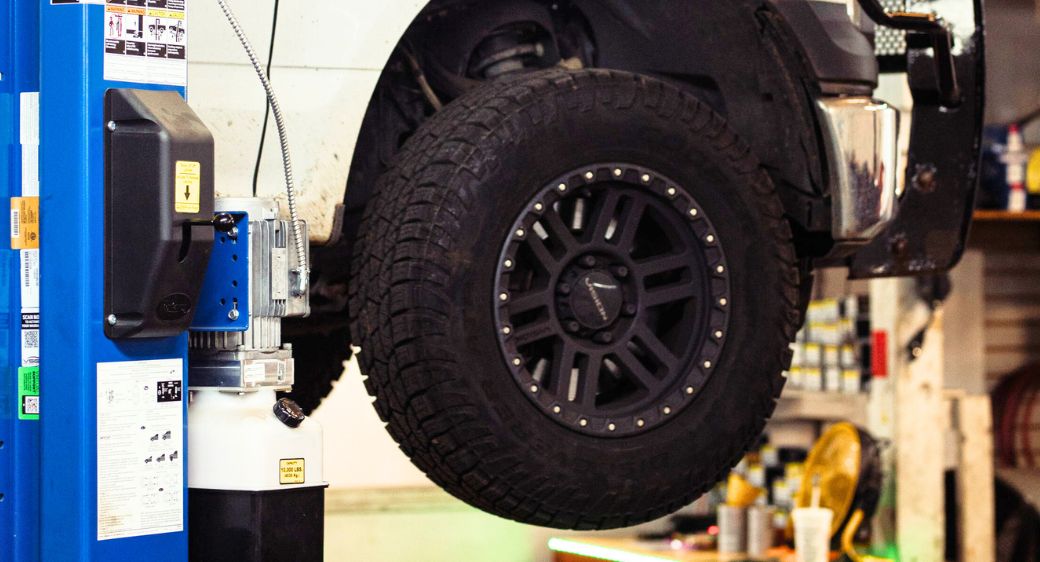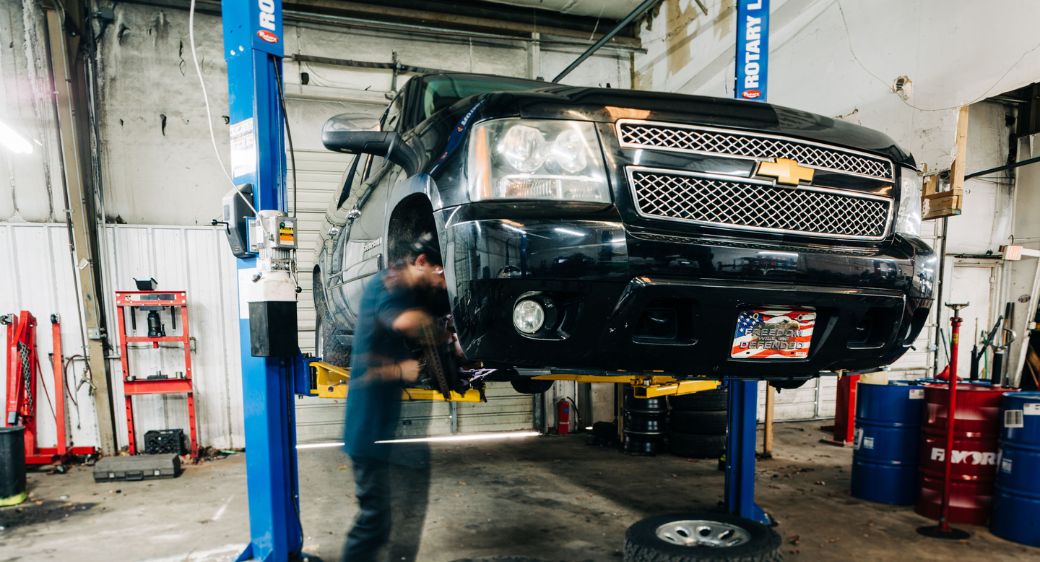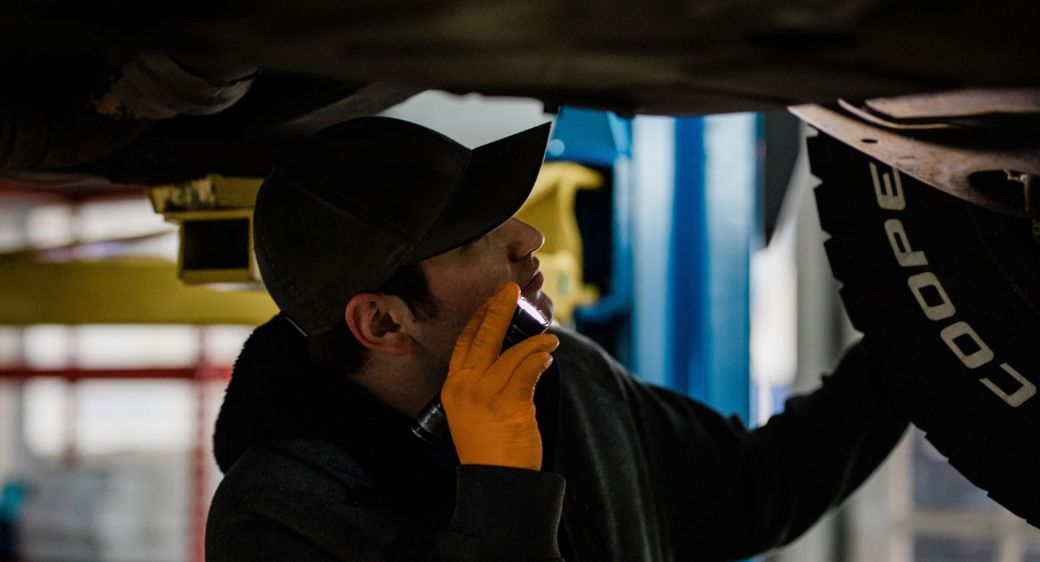The Connection Between Suspension Health and Tire Wear

Sharing this:
Maintaining your vehicle’s condition involves more than regular oil changes and brake checks. Unfortunately, many drivers don’t understand the connection between suspension health and tire wear. Being aware of this relationship can save you money, increase your safety on the road, and enhance your driving experience. Learn how a healthy suspension system contributes to even tire wear, and explore the signs of potential issues.
Understanding Suspension Systems
First, it’s important to understand what an automotive suspension system does. It supports your vehicle’s weight, absorbs shocks from the road, and keeps the tires in contact with the road. This complex network of springs, shocks, and struts stabilizes your vehicle.
A healthy suspension system balances the vehicle and distributes its weight evenly across all tires. This prevents one tire from bearing more load than others, which can lead to uneven wear. An uneven suspension system could result in poor handling, reduced comfort, and premature tire wear.
Failing to maintain the suspension system can increase vehicle maintenance costs and safety risks. Worn-out suspension components can contribute to misalignment, and the tires may wear out unevenly. Investing time and resources into understanding and maintaining your vehicle’s suspension system can have long-term benefits.
How Suspension Affects Tire Wear
The suspension system’s primary role is to keep the tires in contact with the road. This supports steering and braking efficiency and prevents rapid tire degradation. When the suspension sustains damage due to worn-out components, it cannot maintain consistent contact with the road. This could cause uneven tire wear and reduce the lifespan of the tires.
A suspension system in alignment holds the tires against the road at the ideal angle, distributing weight evenly. Misalignment often results from suspension issues and causes tires to bear the brunt of the road and develop irregular wear patterns.
Shock absorption also affects tire wear. The suspension system absorbs impacts from the road as you drive, protecting tires from excessive stress. If the shocks or struts wear out, they may fail to dampen impacts. Instead, the tremors will transfer to the tires. This can lead to premature tire failure and necessitate replacements.

Recognizing Signs of Suspension Issues
To protect your vehicle’s tires from undue wear, you should recognize the symptoms of suspension problems. One common sign is a noticeable pull to one side while driving. This typically indicates misalignment, which can unevenly wear down the tires. Regularly checking suspension alignment can prevent this issue before it becomes serious.
Another sign is an unusually bumpy ride, suggesting worn shocks or struts. If your vehicle doesn’t absorb bumps well, it can generate excessive bouncing on the road. Addressing this issue can prevent further damage to your vehicle’s suspension system and tires.
Uneven tire wear directly indicates suspension problems. Regularly inspect the tires for odd wear patterns, and consult a professional mechanic for advice on next steps.
Maintaining Suspension for Optimal Performance
Regular suspension system maintenance supports even tire wear and optimal vehicle performance. Start by scheduling routine inspections with your mechanic. During these inspections, they can identify early signs of wear and recommend necessary repairs.
They will also conduct alignment checks. Alignment guarantees that tires wear evenly and reduces unnecessary stress on them. Every 6,000 miles or so, take your vehicle to your mechanic to check out the undercarriage.
Don’t overlook shock and strut maintenance! These components bear the brunt of road impacts, and keeping them in good condition protects the tires from excessive stress. If you notice bounciness or poor handling while driving, have your mechanic inspect the shocks and struts.
The Role of Regular Inspections
Regular inspections can maintain the condition of your vehicle’s suspension and tires. During inspections, technicians can identify potential issues before they worsen, saving you from costly repairs down the line. A comprehensive inspection includes checking alignment, shocks, struts, and other suspension components for wear and damage.
In addition, you can perform self-checks to address problems promptly. Look for uneven tire wear, listen for unusual noises when driving, and pay attention to your vehicle’s handling. By investing in preventive measures, you’ll enjoy a smoother and safer ride.

Impact of Neglect on Tire Wear
Neglecting suspension maintenance can lead to tire issues. Small issues can snowball and cause tires to wear out. The cost of replacing tires due to wear can add up quickly. Additionally, uneven tire wear decreases grip and handling, particularly in adverse weather. A poor-quality suspension system can create dangerous driving situations, underscoring the importance of regular suspension maintenance. By proactively addressing vehicle concerns, you can enjoy a safer, more comfortable ride.
Benefits of a Healthy Suspension System
Keeping your suspension system in good condition offers numerous benefits beyond tire longevity. A well-maintained suspension system contributes to a smoother, more comfortable ride because it can absorb impacts from the road and minimize cabin noise.
It also enhances vehicle handling and stability so that your car responds accurately to steering inputs. Improved handling keeps you safe during sudden maneuvers. Furthermore, a quality suspension system reduces strain on other components, extends their lifespan, and reduces maintenance costs. Suspension maintenance is an investment in your vehicle’s long-term performance and reliability.
Investing in Quality Suspension Components
Investing in quality components is crucial for suspension repairs and replacements. High-quality shocks, struts, and alignment parts will keep your vehicle’s suspension system functional for a long time. Quality components provide great shock absorption, stability, and handling. They also tend to be more durable than other parts, reducing the frequency of replacements and associated costs.
While quality components may have a high upfront cost, the long-term benefits far outweigh the initial expense. By choosing reliable suspension parts, you’ll enjoy improved ride quality, enhanced safety, and prolonged tire life.
Conclusion
Don’t overlook the connection between suspension health and tire wear! Understanding the impact of a healthy suspension system on tire longevity and vehicle performance is essential for every car owner. Regular inspections, prompt repairs, and quality components can make your vehicle’s suspension and tires work harmoniously. If you’re experiencing suspension-related issues, contact our team for expert steering and suspension repair services. Your safety and driving enjoyment depend on it.



